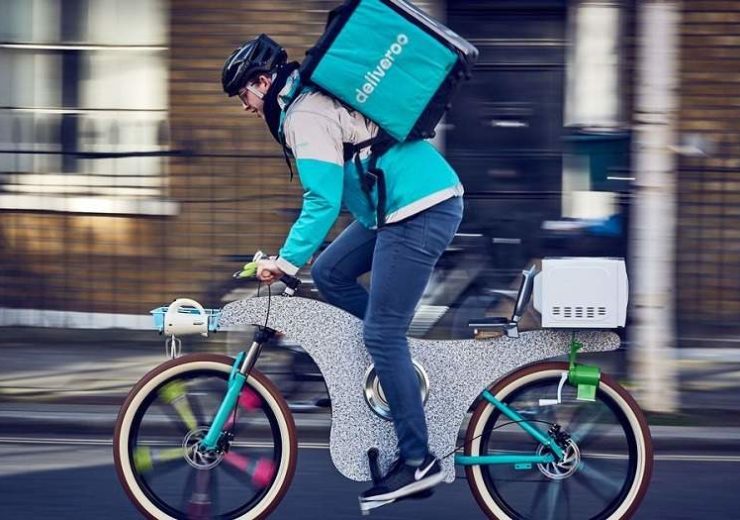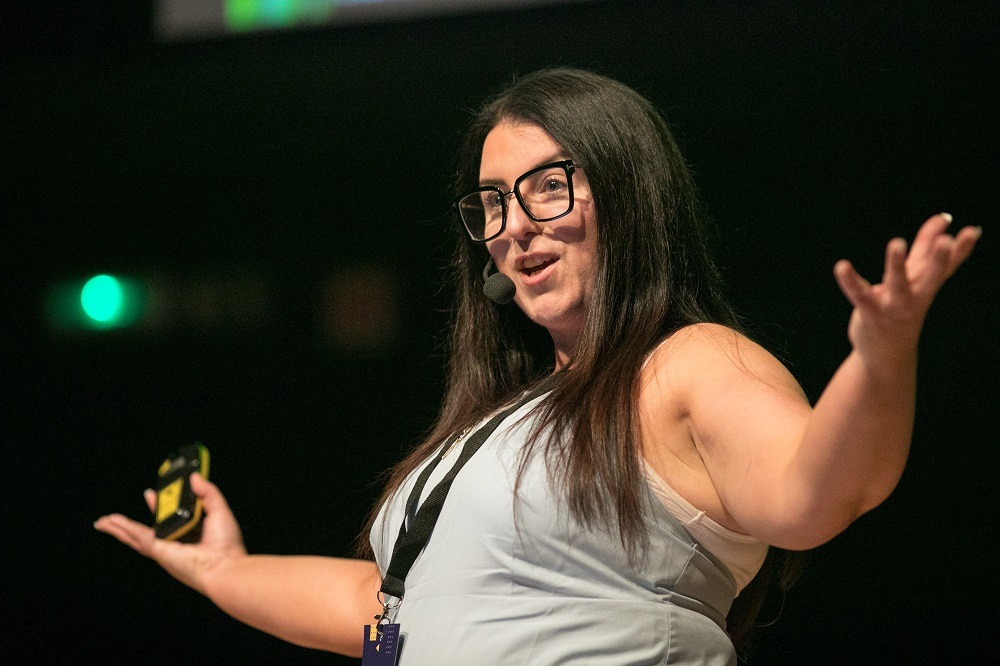Customer experience expert Paula Kennedy points out how the gig economy business model needs to focus on consumers, as well as workers

Deliveroo is one of the main companies associated with the gig economy (Credit: Deliveroo)
The future of work is already upon us, as the gig economy most commonly associated with the likes of Uber and Deliveroo is being branched out into other industries that are creating a new business model. Customer experience expert Paula Kennedy explains why to Dan Robinson
The gig economy often draws negative connotations of poor workers’ rights and lack of stability – but it’s having a transformative impact on how businesses serve their customers.
Paula Kennedy believes almost any company could learn something from this new form of employment – in which people work as freelancers on a flexible, on-demand basis powered by technology – by recognising how consumer habits are changing too.
She points out how only 53 of the original Fortune 500 of the largest US companies in 1955 are still on the list, while four in five consumers are looking for new consumption models.
It highlights why businesses need to offer something different, starting with how they deal with customers.
“Digital transformation doesn’t have an end date and requires a sea change throughout the organisation,” says Paula, vice-president at Concentrix, a business process outsourcing firm headquartered in California but with 225,000 staff across the world.
“Just as the future of work doesn’t have a start date because it’s already here.

“We’re racing through an existing digital economy. Ten years ago, we still thought the internet was an English-speaking place and that work was a 9 ‘til 5 environment.
“With the gig economy, we’re creating a ubiquitous mobile workforce to unlock new value for our customers.
“It’s breaking down and unshackling everything from the previous model to create more of a sense of freedom and flexibility – for the experience of both employees and businesses.
“We believe that taking this perspective is going to help define and set new rules for the industry and, through that, increase the competitive advantage.”
What is the gig economy and how does it impact a business model?
The so-called gig economy term derives from the word “gig” being used as slang for a job assigned for a specified period of time.
It’s a free market system in which temporary positions are common and businesses employ independent workers for short-term engagements, although it has been criticised as a form of employee exploitation with very little workplace protection.
Ride-hailing app giant Uber and food delivery service Deliveroo are among the companies most closely associated with the culture, but it can also involve project-based workers and part-time hires.

In the US, 57 million people work in the gig economy, according to a study by Washington DC management consultancy Gallop last year, while Paula says the figure for India is 15 million and about eight to nine million in Europe.
The rise of the sharing economy – spearheaded by peer-to-peer business models like Uber, Airbnb and Freelancer.com that allow consumer to access services through short-term rentals – alongside trading websites such as eBay and Etsy, has created an explosion in the “side hustle”.
It’s something that one in four people in the UK now have to bring in extra income and is expected to double by 2030.
Paula says this stems from an “insecurity” among ordinary people who worry about finances and their future, while also adding some extra “pocket money” to manage their lives better.
Impact of gig economy business model on the workforce
Whereas remote and flexible working was once deemed a perk by innovative businesses, Paula says the gig economy trends suggest it’s now the “new normal”.
It’s perhaps even a demand from a workforce that will be three-quarters millennial by 2025, with a Deloitte report in 2016 finding that nearly 75% of this generation believe a “work from home” or “work remotely” company policy is important.
“Our companies drive economic markets but it’s our employees who drive labour markets,” adds Paula, speaking at the Unbabel Customer Centric Conference in Lisbon last month.
“People are saying goodbye to the 9 ‘til 5 – they want to choose how they work, where they work and when they work.
“With the rise of cloud-based software, it can take away some of the shackles but we have to rewire our brains too.”

Paula believes technology could enable companies to access on-demand talent from around the world, rather than just full-time hires based in a central office.
She says: “For the problem-solvers, it’s about answering a different need to work around your lifestyle, and not live around work.
“You’re able to tap into the working mums because they may want to do a gig economy job between school runs or while the baby is sleeping.
“There’s young people, too, who may not want to pay the real estate costs in a city or travel a long way.
“How can we widen the net with skillsets and talent, so we’re not just keeping it all in a particular city or postcode?”
How customer service should reflect gig economy business model
When it comes to customer experience, the gig economy – alongside the sharing economy – is driving a very different consumption model.
Paula explains: “Most of the changes will be driven by consumer demand because they want frictionless processes and personalisation.
“This only happens if your services are available when customer want them to be available.”
This “great leap forward” requires a potential new workforce with different expertise, meaning training needs to represent the varying skillsets.
“Businesses can continue to grow – it’s just changing shape a little bit by having these new channels,” adds Paula.
“The workforce being more agile means it can come from different locations and can create a community of people who offer something different – whether it’s a college student working in a bar or someone who is returning to work after some time out.
“From a customer experience perspective, because you can reach that richer talent pool, you’re getting a better response, getting things done faster and productivity is better.”
One example in which a more sporadic, flexible workforce could benefit a company is by having a “community” of brand ambassadors located in various time zones.
This allows customers to contact a person acting on behalf of a business – not necessarily a full-time customer service representative, nor a chatbot – at any time of the day, rather than within specific working hours.
Paula explains: “A community is a group of people all over the world who are ‘fans’ for this brand – they’re just like you and can help you.
“It’s a bit like online forums, but it’s widening from a traditional tech space into all domains.”
She adds: “The future is here right now. While we don’t quite know how that will work for telecommuting, if something like remote work can be an industry over time, the one thing we can be totally sure of is the transition into markets will be furious.”


